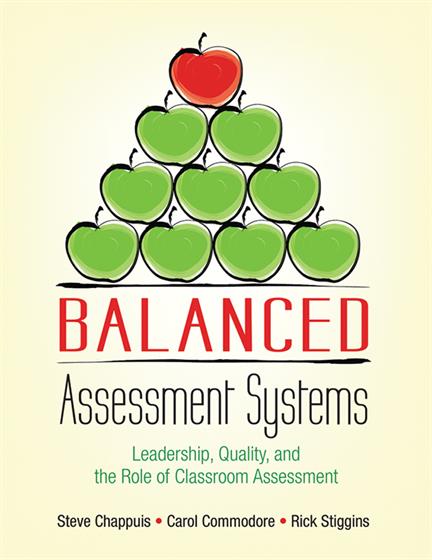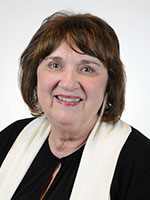Introduction
About the Authors
Part 1. Balanced Assessment Systems and Student Learning
Today’s Assessment Environment
Assessment and the New School Mission
Building Local Assessment Systems for Balance and Quality
Inside the System
Levels of Assessment Use
Classroom Assessment
Interim/Benchmark Assessment
Annual Assessment
Activity 1.1: Formative or Summative?
The Benefits of Balance
Learning Targets for Readers
Thinking About Assessment: Support Resources for Part 1
Activity 1.2: Embracing the Vision of a Standards-Based School
Activity 1.3: Discussing Key Assessment Concepts With Faculty
Part 2. Five Assessment Actions for Balance and Quality
Action 1: Balance Your Assessment System
Is Your Assessment System in Balance?
Strategies for Balancing Assessment Systems
Activity 2.1: Conducting an Assessment Audit
Action 2: Continue to Refine Achievement Standards
What Is the Current State of Your Achievement Standards?
Student- and Family-Friendly Learning Targets
Activity 2.2: Deconstructing Standards Into Classroom-Level Achievement Targets: Practice for School Leaders
Action 3: Ensure Assessment Quality
How Can You Ensure Assessment Quality?
Activity 2.3: Indicators of Sound Classroom Assessment Practice
Action 4: Build Effective Systems for Communicating Assessment Results
Action 5: Link Assessment to Student Motivation With Assessment for Learning Strategies
Assessment for Learning: Bringing Students Onboard
Activity 2.4: Assessment for Learning Self-Evaluation
Thinking About Assessment: Support Resources for Part 2
Activity 2.5: Local Assessment System Self-Evaluation
Part 3. Individual Leadership Actions for Balance and Quality
Individual Leadership Actions
Individual Leadership Action 1: Deepen your personal understanding of a sound and balanced assessment system and the conditions required to achieve it.
Activity 3.1: Merging Local and State Assessment Systems
Individual Leadership Action 2: Promote the necessity and use of clear academic achievement standards in every subject and grade level with aligned classroom-level learning targets and the understanding of their relationship to the development ....
Activity 3.2: Implementing the Written Curriculum
Individual Leadership Action 3: Promote and communicate standards of quality for student assessments, helping teachers learn to assess accurately, and work to ensure that these standards are met in all school/district assessments.
Activity 3.3: Verifying Teachers’ Content Knowledge and Assessment Competence
Individual Leadership Action 4: Deepen your knowledge of formative assessment practices that involve students and work with staff to integrate them into classroom instruction.
Activity 3.4: Communicating Learning Targets in Student-Friendly Language
Individual Leadership Action 5: Create the conditions necessary for the appropriate use and reporting of student achievement information, including report card grades.
Grading and Reporting
Activity 3.5: A Rubric for Sound Grading Practice
Activity 3.6: When Grades Don’t Match the State Assessment Results
Individual Leadership Action 6: Form or participate in peer learning groups to practice observing and evaluating teacher classroom assessment competencies.
Activity 3.7: Should Teachers Be Held Accountable for Assessment Competence Through Evaluation?
Individual Leadership Action 7: Review and examine current school/district assessment-related policies for alignment to sound assessment practice, and encourage revision as needed.
Activity 3.8: Using School/District Policies to Support Quality Assessment
Thinking About Assessment: Support Resources for Part 3
Activity 3.9: Auditing for Balance in Classroom Curriculum and Assessment
Activity 3.10: Assessment Leadership Success Indicators
Activity 3.11: Action Planning for Assessment Balance and Quality
References
Index





